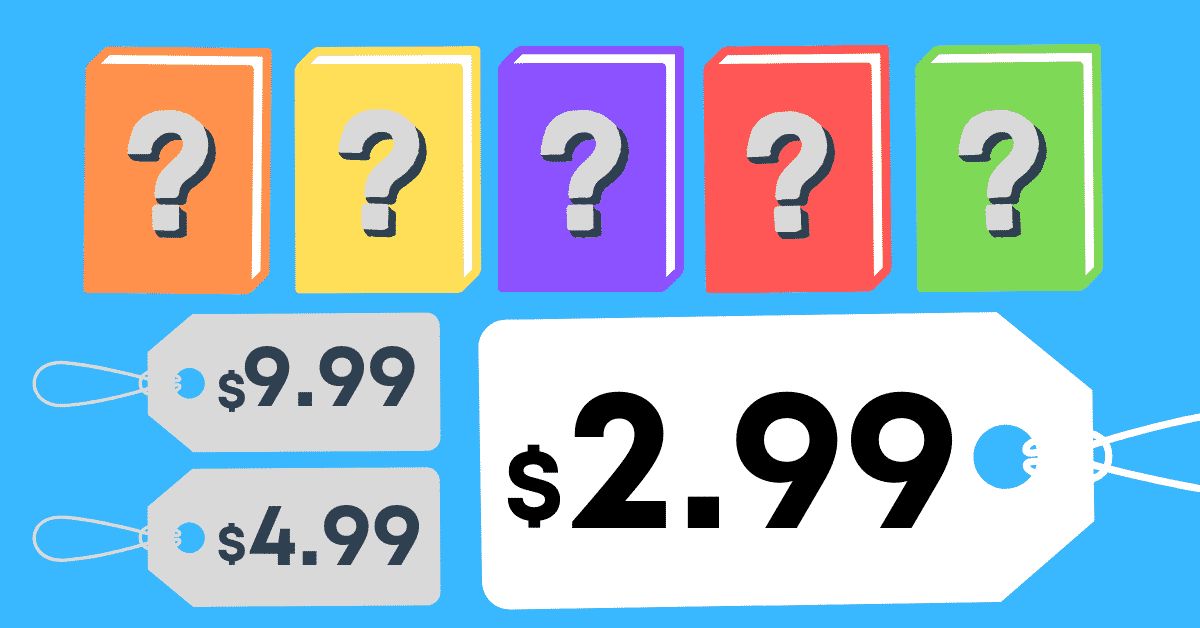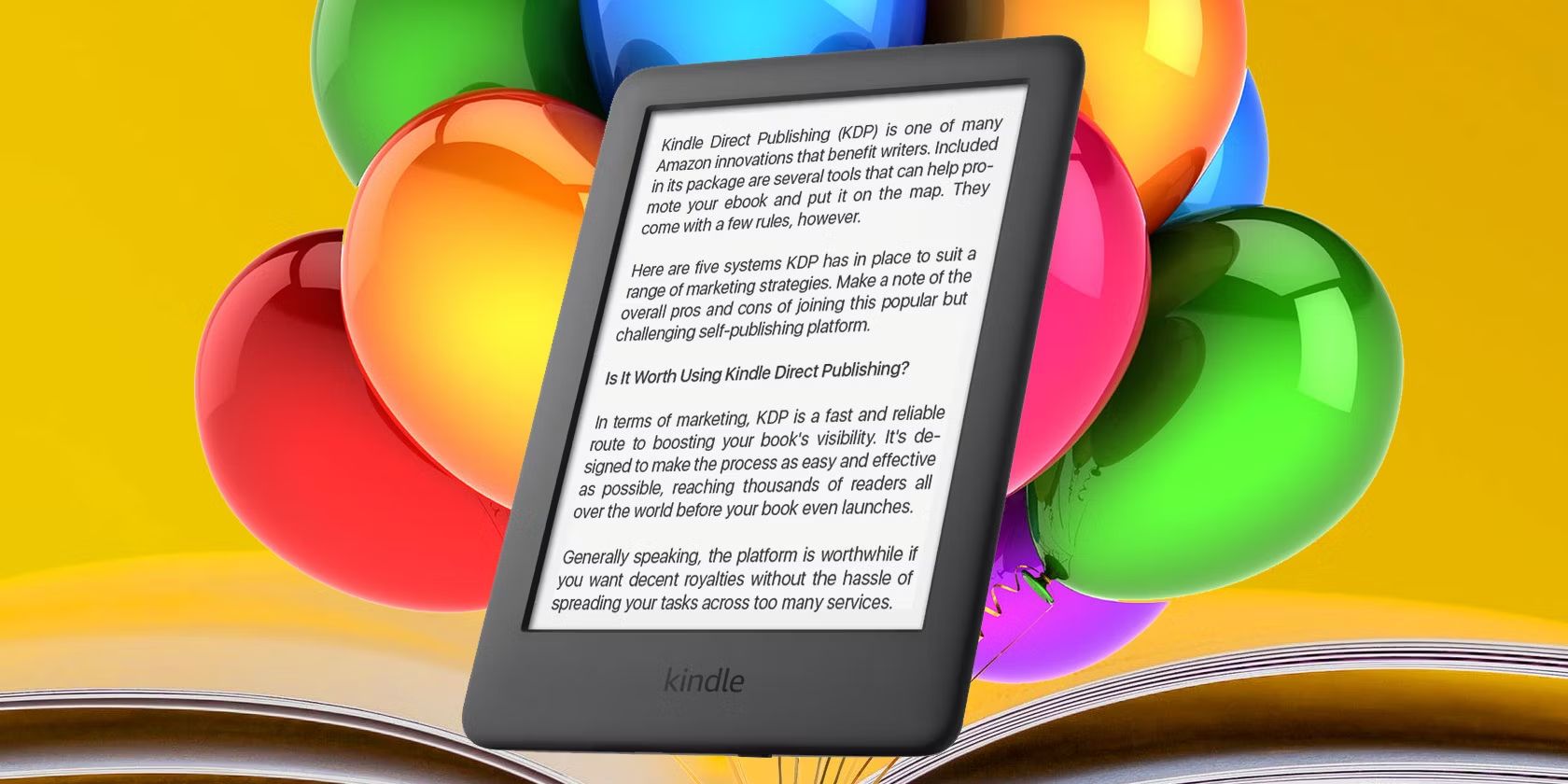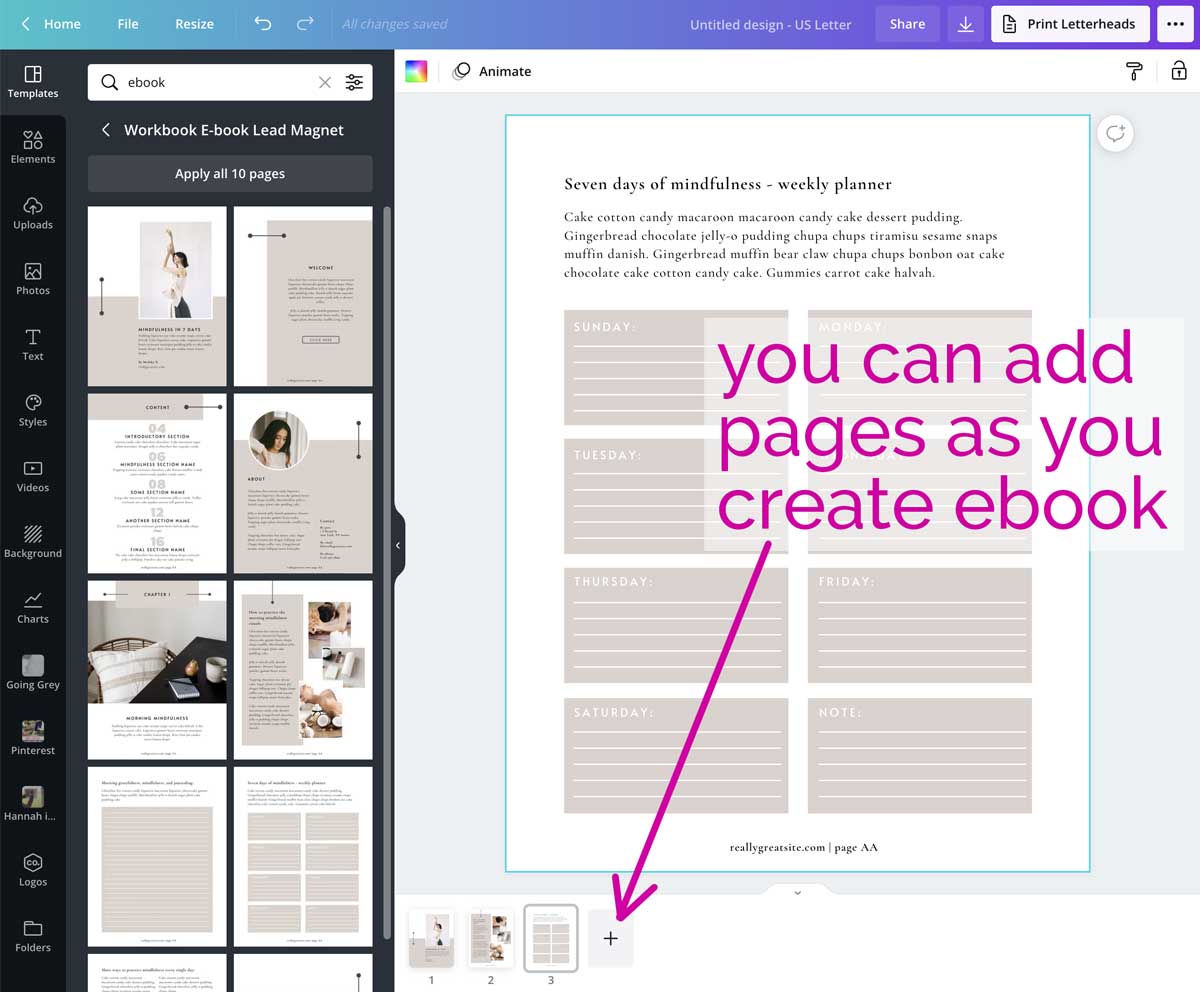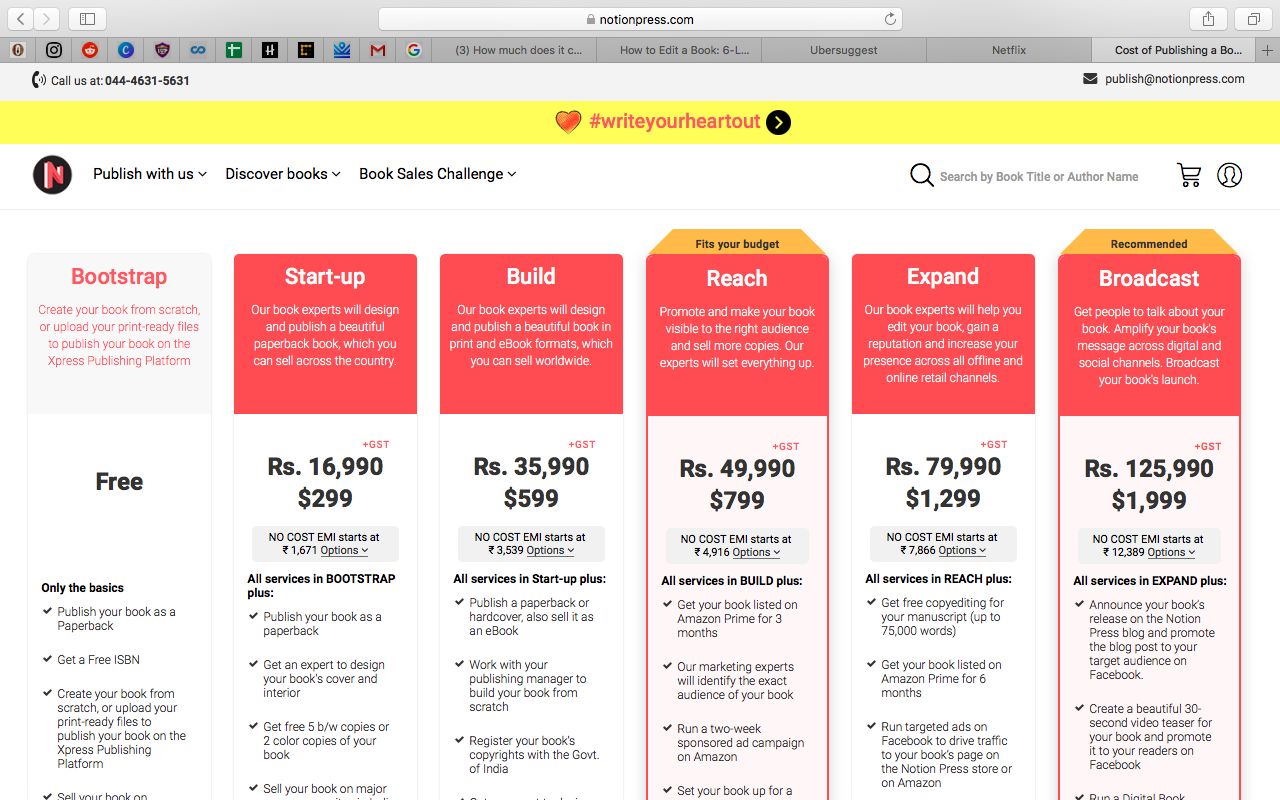Introduction
An eBook, short for electronic book, has become a popular and effective tool in the digital marketing landscape. As technology advances, people are increasingly turning to digital platforms for information and entertainment. eBooks provide a convenient and accessible way to deliver valuable content to a wide audience.
Unlike traditional books, eBooks are not limited by physical constraints. They can be easily created, distributed, and accessed on various devices, such as smartphones, tablets, and e-readers. This accessibility has made eBooks a valuable asset for marketers seeking to engage and educate their target audience.
In this article, we will explore what an eBook is, its importance in marketing, and the benefits of using eBooks as part of your marketing strategy. We will also provide tips on how to create and promote an engaging eBook that resonates with your audience, as well as how to measure its success.
Whether you’re a business owner, entrepreneur, or digital marketer, understanding the power of eBooks in marketing can help you establish your brand, drive traffic to your website, generate leads, and build customer loyalty. So, let’s dive in and discover the world of eBooks in marketing.
Definition of an eBook
An eBook is a digital version of a printed book that can be read on electronic devices. It is typically formatted in a way that resembles the pages of a traditional book, but it is accessed and read digitally. eBooks offer the same content and information as printed books but in a more versatile and portable format.
One of the key features of eBooks is their ability to be easily distributed and shared. Unlike physical books, which require printing and shipping, eBooks can be instantly downloaded or accessed online. This convenience has made eBooks a popular choice for readers looking for instant access to a wide range of titles.
eBooks come in various formats, including PDF, EPUB, and MOBI, among others. These formats are compatible with different devices and e-reading apps, ensuring that eBooks can be accessed across a wide range of platforms and devices.
Moreover, eBooks often come with interactive features such as hyperlinks, multimedia elements, and bookmarks, enhancing the reading experience and allowing readers to navigate through the content more easily.
With the rise of e-readers, tablets, and smartphones, eBooks have become an integral part of the digital reading landscape. They offer numerous advantages over traditional printed books, including portability, accessibility, and cost-effectiveness. Whether it’s for personal reading or marketing purposes, eBooks have revolutionized the way information is consumed and shared.
Importance of eBooks in Marketing
eBooks have emerged as a powerful marketing tool for businesses of all sizes. They offer a unique opportunity to engage with your target audience, establish industry expertise, and drive traffic to your website. Here are some key reasons why eBooks are important in marketing:
- Lead Generation: eBooks are an effective way to capture leads and expand your email list. By offering valuable content, readers are more likely to provide their contact information in exchange for access to the eBook. This allows you to nurture and market to these leads in the future.
- Establish Authority: eBooks allow you to showcase your expertise and position your brand as a thought leader in your industry. By providing valuable and insightful information, you can build trust and credibility with your target audience.
- Content Marketing Strategy: eBooks can be a cornerstone of your content marketing strategy. By creating in-depth and comprehensive content, you can attract and engage your target audience, driving them to explore other content and offerings on your website.
- Brand Awareness: Distributing eBooks with your branding and contact information helps increase brand visibility. When readers share or recommend your eBook, it expands your reach and exposes your brand to new potential customers.
- SEO Benefits: Well-optimized eBooks can improve your website’s search engine rankings. By incorporating relevant keywords and providing valuable information, you can attract organic traffic to your website.
- Long-Term Value: Unlike other forms of marketing content, eBooks have a longer shelf life. Once created, they can continue to generate leads and drive traffic to your website for months or even years to come.
- Versatility: eBooks can be repurposed and tailored to different marketing channels. You can extract sections or create blog posts, social media posts, or email newsletters based on the content of your eBook, maximizing its impact and reach.
As you can see, eBooks play a vital role in marketing strategies by helping you attract, engage, and convert your target audience. By leveraging the power of eBooks, you can establish your brand’s authority, expand your reach, and ultimately drive business growth.
Benefits of Using eBooks in Marketing
Using eBooks as part of your marketing strategy can yield numerous benefits for your business. Here are some key advantages of incorporating eBooks into your marketing efforts:
- Increased Brand Authority: eBooks are an effective way to demonstrate your expertise and establish yourself as a trusted authority in your industry. By providing valuable and in-depth information, you can position your brand as a go-to resource for your target audience.
- Lead Generation: eBooks can serve as powerful lead magnets. By offering high-quality content in exchange for contact information, you can attract and capture leads that are genuinely interested in what your business has to offer.
- Improved Customer Engagement: eBooks allow you to engage your audience in a more interactive and immersive manner. Through compelling storytelling, visuals, and multimedia elements, you can create a captivating experience that keeps readers engaged from start to finish.
- Expanded Reach: eBooks can be easily shared and distributed, allowing you to reach a wider audience beyond your existing customer base. When readers find value in your eBook, they are more likely to share it with others, extending your brand’s reach organically.
- Cost-Effective Marketing: Creating an eBook is a cost-effective marketing strategy compared to traditional forms of advertising. Once created, eBooks can be shared repeatedly without incurring additional costs, making them a valuable asset with a high return on investment.
- Enhanced Brand Awareness: Through strategic branding and design, eBooks can improve brand awareness and recognition. Incorporating your brand elements, such as logos and color schemes, helps readers associate the valuable content they receive with your brand.
- SEO Benefits: eBooks can boost your search engine rankings and drive organic traffic to your website. By optimizing your eBook for relevant keywords and providing valuable information, you increase the chances of appearing higher in search engine results.
- Positioning against Competitors: Creating a high-quality eBook allows you to differentiate yourself from competitors. By offering unique insights, strategies, or solutions, you demonstrate your value proposition and why customers should choose your brand over others.
- Long-Term Value: Unlike shorter-form content, such as blog posts or social media updates, eBooks have a longer shelf life. They can continue to attract leads and drive traffic to your website for an extended period, providing ongoing value and returns.
Overall, incorporating eBooks into your marketing strategy can yield significant benefits. From establishing brand authority to generating leads and reaching a wider audience, eBooks offer a versatile and impactful way to grow your business.
How to Create an eBook for Marketing Purposes
Creating an eBook for marketing purposes involves several key steps to ensure its effectiveness and impact. Here’s a breakdown of the process:
- Define Your Goal: Start by clarifying the purpose of your eBook. Is it to generate leads, educate your audience, or promote a product/service? Having a clear goal in mind will help shape your content and target the right audience.
- Choose the Right Topic: Select a topic that aligns with your business expertise and addresses the needs or pain points of your target audience. Keyword research and competitor analysis can help guide your topic selection.
- Plan Your Content: Outline the structure and chapters of your eBook. Break down your topic into subtopics and plan the flow of information. Ensure that your content is well-organized, engaging, and provides value to your readers.
- Create Compelling Content: Write your eBook using a conversational and accessible writing style. Incorporate relevant statistics, examples, and case studies to support your points. Include visuals, such as infographics or images, to enhance the reading experience.
- Design and Format: Pay attention to the visual aspect of your eBook. Use a professional and consistent design that aligns with your brand identity. Optimize the layout and formatting for readability. Consider using headings, subheadings, and bullet points to make the content visually appealing and easy to digest.
- Incorporate Call-to-Actions: Strategically place call-to-action buttons or links throughout your eBook to drive readers to take further action. This could include signing up for a newsletter, visiting your website, or requesting a consultation.
- Create a Catchy Title and Cover: Your eBook’s title and cover are essential for attracting attention and generating interest. Craft a compelling and relevant title, and design an eye-catching cover that reflects the content and entices readers to click.
- Edit and Proofread: Ensure the accuracy and quality of your content by thoroughly editing and proofreading your eBook. Check for grammar, punctuation, and spelling errors. It’s also beneficial to have someone else review your eBook for fresh eyes.
- Optimize for SEO: Incorporate relevant keywords naturally throughout your eBook. This will help search engines index your content and improve its visibility in search results. Additionally, optimize your eBook’s metadata, such as title tags and meta descriptions, to enhance its discoverability.
- Convert to the Right Format: Convert your eBook to a format that is widely compatible with e-readers, devices, and platforms. Common formats include PDF, EPUB, and MOBI. Consider offering your eBook in multiple formats to cater to different reader preferences.
By following these steps, you can create a well-crafted and impactful eBook that effectively serves your marketing objectives. It’s essential to invest time and effort into each stage to ensure the final product provides value and resonates with your target audience.
Choosing the Right Topic for your eBook
Choosing the right topic for your eBook is crucial to its success. It not only determines the interest and engagement of your target audience but also aligns with your marketing goals. Here are some factors to consider when selecting a topic:
- Target Audience: Understand your target audience’s interests, needs, and pain points. Conduct market research, analyze customer feedback, and explore industry trends to identify topics that resonate with your audience.
- Relevance to Your Business: Choose a topic that aligns with your expertise and relates to your products/services. Demonstrating your industry knowledge and providing valuable insights will strengthen your brand positioning.
- Keyword Research: Conduct keyword research to identify popular search terms and phrases related to your industry. Incorporate these keywords naturally into your eBook’s content and title to improve its search engine visibility.
- Uniqueness: Look for a topic that offers a fresh perspective or unique insights. Differentiate your eBook from competitors by providing a fresh take or addressing an underserved niche within your industry.
- Educational Value: Offer educational content that provides actionable tips, strategies, or valuable information. Ensure that your eBook offers practical value and helps your readers solve problems or improve their lives.
- Trending Topics: Keep an eye on industry trends, current events, or emerging topics that are relevant to your target audience. Creating an eBook around a trending topic can generate buzz and attract a wider readership.
- Content Demand: Identify topics that have high demand and limited supply. Look for gaps in existing content within your industry and provide a comprehensive and insightful eBook that fills those gaps.
- Longevity: Consider topics that have a lasting appeal and will remain relevant for an extended period. This ensures that your eBook continues to attract readers and provide value long after its initial release.
By considering these factors, you can choose a topic that not only engages your target audience but also aligns with your marketing objectives. Selecting the right topic sets the foundation for creating a valuable eBook that attracts readers, enhances your brand’s authority, and drives your marketing efforts forward.
Writing and Formatting Tips for Creating an Engaging eBook
When it comes to creating an engaging eBook, the quality of your writing and the formatting of your content play crucial roles in capturing and retaining readers’ attention. Here are some essential tips to follow:
- Create Compelling Content: Focus on providing valuable and informative content that meets the needs of your target audience. Offer insights, strategies, or solutions that are unique and actionable.
- Use a Conversational Tone: Write in a conversational and engaging tone that resonates with your readers. Avoid overly formal or technical language and instead use language that is easily understandable.
- Break Down Your Content: Use headings, subheadings, and bullet points to break down your content into easily digestible sections. This enhances readability and allows readers to navigate the eBook more efficiently.
- Include Visuals: Incorporate relevant visuals, such as images, charts, or infographics, to support your content. Visual elements help break up text-heavy sections and make the eBook more visually appealing.
- Highlight Key Points: Use bold, italics, or underlining to emphasize important points or key takeaways. This helps readers grasp the main ideas and facilitates better retention of the information.
- Engage with Storytelling: Incorporate storytelling techniques to make your eBook more engaging. Share anecdotes, real-life examples, or case studies that illustrate your points and captivate readers’ attention.
- Keep Paragraphs Concise: Break up long paragraphs into shorter ones to maintain reader interest. Aim for paragraphs that are 3-4 sentences long, making it easier for readers to skim and absorb the information.
- Ensure Consistency: Maintain a consistent writing style, tone, and voice throughout the eBook. This helps create a cohesive reading experience and builds trust with your audience.
- Edit and Proofread: Thoroughly edit and proofread your eBook to ensure grammar, punctuation, and spelling accuracy. Run a spell check, and ask a peer or professional editor to review your content for any errors or inconsistencies.
- Optimize for Readability: Choose a clear and legible font for your eBook’s text. Aim for an appropriate font size and line spacing to ensure comfortable reading on various devices.
- Table of Contents and Index: Include a table of contents and an index (if applicable) to make navigation easier for readers. This enables them to quickly find specific sections or reference information.
By following these writing and formatting tips, you can create an eBook that is not only visually appealing but also engaging and easy to read. A well-crafted eBook ensures a positive reader experience, increasing the chances of capturing and retaining your audience’s attention throughout the content.
Designing an Eye-Catching eBook Cover
An eye-catching eBook cover is essential to attract readers’ attention and compel them to click or download your eBook. Here are some tips to consider when designing your eBook cover:
- Make it Visually Appealing: Use high-quality images, graphics, or illustrations that grab attention. Ensure that the cover design aligns with your brand identity and evokes the tone or theme of your eBook.
- Focus on Title and Author: Clearly display the title and author’s name on the cover. Choose fonts, colors, and styles that are easy to read and reflect the content’s tone and genre.
- Use Color Psychology: Utilize colors that evoke emotions or convey the message of your eBook. Consider the psychological associations with different colors and choose hues that align with the intended mood or theme.
- Keep it Simple: Avoid cluttering the cover with too much text or excessive design elements. A clean and minimalistic design often stands out and is easier for readers to process and remember.
- Consider Typography: Select fonts that are clear, readable, and visually appealing. Experiment with font combinations to create hierarchy and emphasis on important elements of the cover, such as the title.
- Test with Your Target Audience: Get feedback from your target audience or peers by conducting a focus group or sharing design options for their input. This can provide valuable insights and help you make informed decisions.
- Avoid Stock Images: If using stock images, choose ones that are unique and not overused. Consider customizing or manipulating stock images to create a more personalized and distinctive cover.
- Ensure Scalability: Design your eBook cover with various sizes in mind to maintain visual appeal across different platforms and devices. Ensure that the cover maintains its integrity and legibility when scaled down.
- Publish in Multiple Formats: Adapt your cover design to different eBook formats to ensure compatibility and a consistent visual experience across various e-readers and devices.
- Stay on Brand: Maintain consistency with your overall brand identity, including colors, fonts, and visual style. This helps strengthen brand recognition and ties your eBook to your larger brand presence.
Remember, your eBook cover is your first opportunity to make a positive impression on potential readers. A visually appealing and well-designed cover can significantly increase the likelihood of attracting attention, enticing readers to explore your eBook further.
Distributing and Promoting Your eBook
After creating an engaging eBook, the next crucial step is to effectively distribute and promote it to reach your target audience. Here are some strategies to consider:
- Optimize Your Website: Create a dedicated landing page on your website where visitors can download or access your eBook. Make it visually appealing, include a compelling description, and prominently display a call-to-action to encourage conversions.
- Use Email Marketing: Leverage your email list to promote your eBook. Send personalized email campaigns to your subscribers, highlighting the value and benefits of your eBook. Consider offering a sneak peek or exclusive content to entice them to download it.
- Leverage Social Media: Share snippets, quotes, or visuals from your eBook on your social media platforms to generate interest. Run targeted ads to reach a wider audience who may be interested in your eBook’s topic.
- Content Collaboration: Collaborate with influencers, bloggers, or industry experts who have a significant following. Offer them exclusive access to your eBook or ask them to write a review or feature it on their platform, expanding its reach to their audience.
- Guest Blogging: Write guest blog posts on relevant websites or contribute to industry publications. Include a call-to-action in your author bio, linking to your eBook landing page, to drive traffic and generate leads.
- Create Visual Assets: Develop eye-catching visuals, such as quote cards or infographics, derived from your eBook’s content. Share them on social media, encouraging engagement and driving traffic back to your eBook.
- Offer Limited-Time Promotions: Create a sense of urgency by offering limited-time promotions or discounts on your eBook. This can incentivize readers to take immediate action and spread the word about your eBook.
- Participate in Online Communities: Engage in relevant online communities, such as forums or social media groups, where your target audience gathers. Share insights, answer questions, and discreetly promote your eBook when it aligns with the discussion.
- Collaborate with Other Authors: Partner with other authors in your niche to cross-promote each other’s eBooks. This can help expand your reach and introduce your eBook to a new audience.
- Monitor and Optimize: Track your eBook’s performance using analytics tools. Monitor the number of downloads, conversions, and engagement metrics to understand what strategies are working and make necessary adjustments.
By implementing these distribution and promotion strategies, you can maximize the visibility and impact of your eBook. Remember to tailor your approach to your target audience and continuously refine your efforts based on data and feedback.
Tracking and Measuring the Success of Your eBook
Tracking and measuring the success of your eBook is essential to understand its impact and optimize your marketing efforts. Here are some key metrics and strategies to help you gauge the success of your eBook:
- Downloads and Conversions: Monitor the total number of eBook downloads or sign-ups and track the conversion rate. This metric provides insights into the effectiveness of your eBook in attracting and engaging your target audience.
- Website Traffic and Engagement: Analyze the referral traffic to your website from your eBook landing page. Assess the duration of website visits, page views, and bounce rates to understand the level of engagement and whether visitors are exploring your website further.
- Email Subscriptions: Measure the number of new email subscribers gained through your eBook promotion. A significant increase in subscriptions indicates the quality and relevance of your eBook to your target audience.
- Social Media Engagement: Track the number of likes, shares, comments, and mentions across your social media platforms. Engagement metrics help gauge the reach and impact of your eBook among your social media audience.
- Conversion Rates: Monitor the conversion rates of your eBook’s call-to-action, such as email sign-ups, product purchases, or webinar registrations. Analyze the effectiveness of your content and design in driving readers to take the desired action.
- Customer Feedback: Encourage readers to provide feedback on your eBook through surveys or testimonials. Their input can provide valuable insights into the strengths, weaknesses, and areas of improvement for future eBook creation.
- Return on Investment (ROI): Calculate the ROI by comparing the costs involved in creating and promoting your eBook with the results it generated. Consider factors such as increased website traffic, leads generated, and conversions to assess the overall success and value of your eBook.
- Competitor Analysis: Monitor and compare the performance of your eBook with that of your competitors. Assess their strategies, engagement metrics, and reader feedback to identify areas where you can improve or differentiate your eBook.
- Continuous Improvement: Based on the insights gathered, make data-driven decisions to optimize your eBook marketing strategy. Experiment with different promotional tactics, target new audience segments, or improve your eBook based on reader feedback to enhance its success.
By tracking and measuring these metrics, you can gain valuable insights into the effectiveness of your eBook and its impact on your marketing goals. This data-driven approach allows you to make informed decisions, refine your strategies, and continuously improve your eBook promotion efforts.
Conclusion
eBooks have become an invaluable tool in today’s digital marketing landscape. They offer numerous benefits such as lead generation, brand authority, and extended reach. By creating an engaging eBook and implementing effective distribution and promotion strategies, businesses can establish their expertise, connect with their target audience, and drive growth.
When creating an eBook, it is essential to choose a topic that resonates with your audience and aligns with your marketing goals. Additionally, paying attention to writing style, formatting, and incorporating visuals can make your eBook more appealing and accessible.
Promoting and distributing your eBook through various channels, such as your website, email marketing, social media, and collaborations, expands its reach and increases its chances of success. Tracking and measuring key metrics allow you to evaluate the impact of your eBook and make informed decisions to optimize your marketing efforts.
Remember, creating an eBook is not just about delivering valuable content—it’s also about engaging your audience and building lasting connections. By continuously refining your strategies and learning from the data you collect, your eBook can become a powerful tool to grow your brand and achieve your marketing objectives.

























